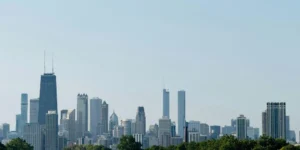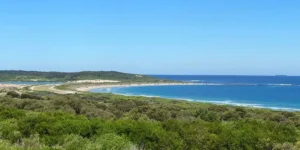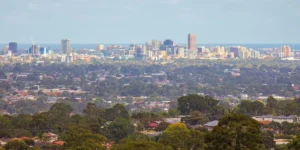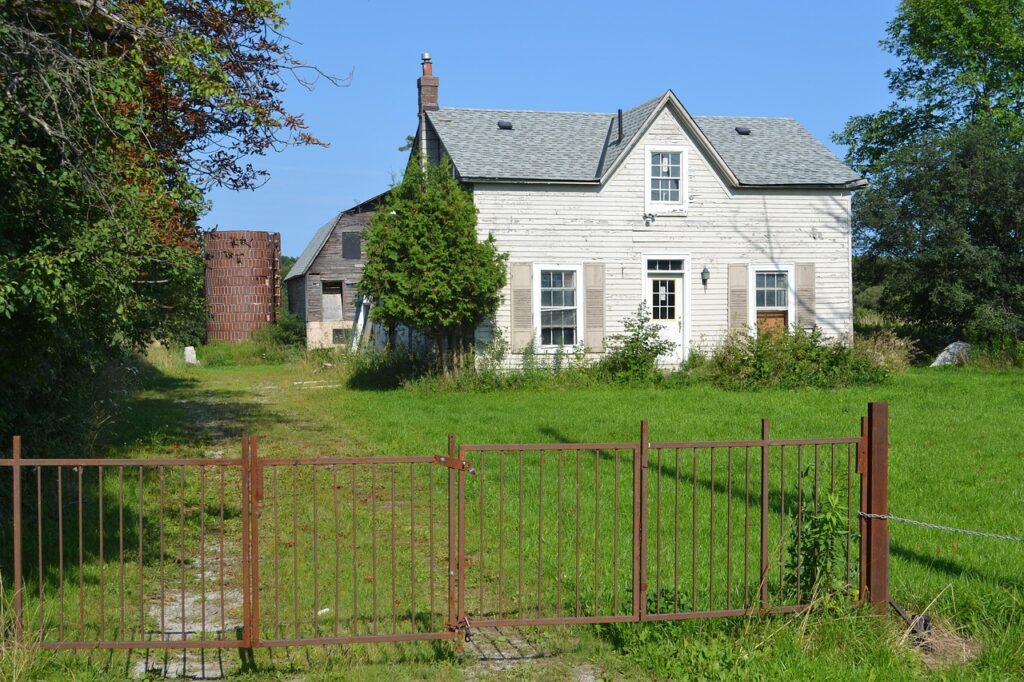Looking to invest in Australian real estate? It’s a smart move, with things like a growing population and big infrastructure spending making it a solid choice. But where’s the best place to invest in Australia for real growth? This guide will break down the top spots, focusing on Queensland, Victoria, and New South Wales, as these states look pretty good for property investors in 2025.
Why Location Matters: Understanding Property Investment Growth in Australia
Location, location, location! It’s the oldest saying in real estate, but it’s still true. When you’re trying to find the best place to buy investment property in australia, it’s not just about the house itself, but where that house sits. A great house in a bad spot might not give you the returns you’re hoping for. The right location can mean the difference between a property that steadily grows in value and one that stagnates. Think about it: a suburb with good schools, transport, and shops is always going to be more attractive to renters and buyers. Here’s why location is so important:
- Demand: High-demand areas usually see better capital growth. This means your property is likely to increase in value over time.
- Rental Income: Good locations attract quality tenants who are willing to pay more. Low vacancy rates are key.
- Infrastructure: Areas with good roads, public transport, and internet access are more desirable. This drives up property values.
Choosing the right location involves looking at a range of factors. It’s about understanding the local economy, population trends, and future development plans. Do your homework, and you’ll be well on your way to making a smart investment. Think about what makes a place desirable. Is it close to the city? Does it have good schools? Is it near the beach? These are all things that can influence property values. It’s not just about finding a cheap property; it’s about finding a property with potential.
National Trends Shaping 2025 Growth: Migration, Rates & Infrastructure
It’s a wild time for property, and a few big things are shaking things up as we head into 2025. We’re talking about where people are moving, what’s happening with interest rates, and all the new infrastructure projects popping up. These factors are going to be key in determining which areas are set for growth.
Population Shifts: The Great Migration Continues
People are still on the move, especially after the last few years. The pandemic really changed where people want to live, and that’s still playing out. We’re seeing a lot of folks leaving the big cities for regional areas, or at least the outer suburbs, where they can get more bang for their buck. This is driving up demand in those areas, which, of course, affects property prices. Keep an eye on ABS migration data to see where everyone’s heading.
Interest Rate Watch: The Balancing Act
Interest rates have been a rollercoaster, haven’t they? It’s a tricky situation. Higher rates make it harder for people to borrow money, which can slow down the market. But if rates start to drop, we could see a surge in buying activity. It’s all about finding that sweet spot where people can afford to buy, but the market doesn’t overheat. It’s a balancing act, and it’s something every investor needs to watch closely. Seeking mortgage broker guidance is essential.
Infrastructure Boom: Building for the Future
There’s a ton of money being poured into infrastructure projects all over the country. New roads, rail lines, hospitals, schools – you name it. And that’s a big deal for property. Areas with good infrastructure are more attractive to buyers and renters. Think about it: if a new train line makes it easier to commute to the city, suddenly those outer suburbs become a lot more appealing. Infrastructure is key to increasing property values and liveability. Major projects include:
- Ripley Town Centre Expansion: $1.5 billion investment in commercial and retail infrastructure to boost local employment and services.
- Ipswich-Ripley Rail Line: Proposed rail extension will cut daily commute times for residents.
- Education and Healthcare Facilities: New schools and healthcare centres are being built to meet growing population demands.
It’s not just about the big projects, either. Even smaller upgrades to local roads or parks can make a difference. Keep an eye on what’s happening in your target areas, because infrastructure can be a real game-changer.
The Unit & Townhouse Surge
Don’t overlook units and townhouses. More and more people are opting for units, townhouses, and apartments, and that should not be overlooked. They often offer a more affordable entry point into the market, and they can be a great option for renters, too. Plus, they’re often located in areas with good access to amenities and transport. It’s worth considering all your options, not just standalone houses.
Key Investment Criteria
No matter your targeted region, successful property investors share common strategies. Consider these essential criteria when deciding where to buy investment property in Australia in 2025:
- Strong Infrastructure: Invest where government and private spending on transport, education, and healthcare is robust. Suburbs benefiting from upcoming rail links, hospital expansions, or major precinct redevelopments often show sustained interest from both buyers and renters.
- Economic Growth: Prioritise suburbs with diverse employment sectors and resilient local economies. Access to jobs across multiple industries, not just one dominant employer, can help stabilise long-term property values.
- Population Growth: Suburbs experiencing increasing population growth will typically see heightened demand and price appreciation. Many investors track ABS migration data or local council forecasts to identify high-growth corridors early.
- Low Vacancy Rates: Areas with low rental vacancies indicate high tenant demand, ensuring consistent rental income. Vacancy rates below 2% are often viewed as a healthy benchmark in metro and regional markets alike.
- Entry Price and Long-Term Affordability: Identify suburbs within your financial reach, aligning investment choices with long-term financial goals and risk appetite. Balancing upfront cost with rental yield and future growth potential remains a key consideration in 2025’s lending environment.
Top Metro Hotspots: Brisbane, Adelaide, Perth & Melbourne Suburbs
Let’s take a look at some of the metro areas that are showing promise for property investment in 2025. We’ll focus on Brisbane, Adelaide, Perth, and Melbourne, digging into specific suburbs within each city. These cities offer a mix of affordability, growth potential, and lifestyle appeal, making them attractive to both investors and owner-occupiers. Brisbane is gearing up for the Olympics, Adelaide offers steady growth, Perth is riding a resource recovery, and Melbourne has resilient outer suburbs. It’s a mixed bag, but that means opportunity! It’s important to remember that property investment always carries risk, and past performance isn’t necessarily indicative of future results. Do your own research and seek professional advice before making any investment decisions. Let’s get into it.
Brisbane: Olympic Boost and Suburban Growth
Brisbane is buzzing with activity, largely thanks to the upcoming Olympics. Suburbs like Woolloongabba are seeing unit price growth linked to Olympic precinct upgrades. Other areas to watch include:
- Logan Central: Offers affordability and strong rental demand.
- Springfield Lakes: Drawing attention for infrastructure investment.
- Hamilton: Unit market showing resilience.
Adelaide: Affordability and Steady Gains
Adelaide continues to be a solid option for investors seeking affordability and steady capital growth. While the Adelaide Hills can be pricey, suburbs like Mount Barker offer a more affordable alternative. Other hotspots include:
- Murray Bridge: Offers a regional lifestyle with growth potential.
- Salisbury: Northern suburb with affordable options.
- Happy Valley: A family-friendly suburb with good amenities.
Perth: Resource Recovery and High Yields
Perth is experiencing a resource-driven recovery, leading to high rental yields and potential for capital growth. Consider these areas:
- Midland: Offers affordable housing and good transport links.
- Baldivis: A growing suburb with a mix of housing options.
- Gosnells: Another affordable option with growth potential.
Melbourne: Outer Suburban Resilience
While some inner-city pockets of Melbourne remain subdued, outer suburban areas are showing renewed activity. Look at:
- Tarneit: A rapidly growing suburb with new housing estates.
- Werribee: Offers affordability and access to amenities.
- Frankston: A coastal suburb with a more affordable price point than other beachside locations.
Brisbane Investment Opportunities: Bayside and Outer-Ring Growth
Brisbane continues to be a hotspot for property investment, with opportunities extending beyond the inner city. Bayside suburbs and the outer rings are presenting unique prospects for growth, driven by affordability, lifestyle, and infrastructure developments. Let’s take a look at some areas to consider.
Bayside Appeal: Lifestyle and Investment
The Bayside suburbs of Brisbane offer a blend of relaxed living and investment potential. Areas like Wynnum and Manly are attracting families and retirees alike, drawn to the waterfront lifestyle and community atmosphere. These areas often provide a good balance of capital growth and rental yield, making them attractive to investors. Consider these factors when looking at Bayside investments:
- Proximity to the water and recreational facilities.
- Availability of public transport, connecting to the CBD.
- Local amenities include schools, shops, and restaurants.
Outer-Ring Growth: Affordability and Development
The outer-ring suburbs of Brisbane, such as Springfield Lakes and Ipswich, are experiencing significant growth due to their affordability and ongoing development. These areas are particularly appealing to first-home buyers and families seeking larger properties at a lower price point. The key is to identify areas with planned infrastructure upgrades and community development projects. Investing in Brisbane’s outer ring requires a long-term perspective. While capital growth may be slower initially, the potential for future appreciation is significant as these areas mature and become more connected to the city.
Key Considerations for Brisbane Investments
Before investing in Brisbane, it’s important to consider a few key factors:
- Infrastructure Projects: Keep an eye on major projects like the Cross River Rail and Brisbane Metro, as these will significantly impact connectivity and property values.
- Rental Demand: Research the rental market in your target area to ensure there is strong demand for rental properties.
- Local Economy: Understand the local economy and employment opportunities, as these will influence the long-term growth potential of the area.
Suburb Spotlight: Logan Central
Logan Central, situated between Brisbane and the Gold Coast, presents an interesting investment opportunity. It offers lower home prices and strong rental demand, making it an attractive option for investors seeking affordability and yield. The area is also benefiting from infrastructure investment, further enhancing its appeal. It’s a good idea to check out the latest property data for Logan Central before making any decisions.
Suburb Spotlight: Ipswich
Ipswich is another outer-ring suburb experiencing significant growth. With a range of new housing developments and infrastructure upgrades planned, Ipswich is attracting families and investors alike. The area offers a more affordable alternative to Brisbane’s inner suburbs, with the potential for long-term capital growth.
Perth & Western Australia: High Yields and Resource-Driven Recovery
Perth and Western Australia are catching the eye of investors, and for good reason. The combination of high rental yields and a recovering resources sector presents some interesting opportunities. It’s not just about digging stuff out of the ground anymore, though. WA is diversifying, and that’s good news for long-term stability.
Resource Sector Rebound
The mining industry is definitely a big player here. When commodity prices are up, WA tends to do well. More jobs get created, people move in, and suddenly there’s more demand for housing. This demand pushes up both rents and property values. It’s a cycle, and right now, it’s looking pretty positive. Keep an eye on global commodity trends, though, because what goes up can come down.
Diversification Beyond Mining
WA isn’t just relying on iron ore and gold anymore. There’s a growing focus on renewable energy projects, agriculture, and tourism. This diversification is important because it makes the economy more resilient to fluctuations in the resources sector. Places like Geraldton are seeing growth thanks to wind and solar farms, creating jobs and boosting the local economy. This is a good sign for long-term investment potential.
Affordable Suburbs with Growth Potential
While some parts of Perth can be pricey, there are still suburbs offering good value. Areas further from the city centre, like Alkimos, Eglinton, and Yanchep, are seeing development and infrastructure improvements. As Perth expands, these suburbs are becoming more connected and vibrant, making them attractive to families and renters. If you’re willing to take a long-term view, these areas could offer solid returns. For example, projected returns in some areas are expected to grow 5-7% annually.
Regional Opportunities: Geraldton
Don’t just focus on Perth. Regional centres like Geraldton are also worth a look. Geraldton offers a coastal lifestyle, affordable housing, and a growing economy driven by agriculture, mining, and renewable energy. Infrastructure projects, such as the Geraldton Port expansion and upgrades to the North West Coastal Highway, are improving connectivity and boosting economic activity. With a budget of around $300,000, you can find houses, townhouses, or even vacant land in Geraldton. Here’s a quick look at some options:
| Suburb | Median Price | Key Features |
| Tarcoola Beach | $420,000 | Prime coastal location, high demand |
| Waggrakine | $300,000 | Affordable, good for budget-conscious investors |
Tips for Investing in WA
- Do your research: Understand the local market, economic drivers, and potential risks.
- Talk to the experts: Consult with real estate professionals who know the WA market.
- Consider property management: Engage a property manager to simplify rental and maintenance.
Investing in WA property can be a smart move, but it’s not a guaranteed win. Like any investment, there are risks involved. Make sure you do your homework, get good advice, and understand your financial situation before making any decisions.
Adelaide Advantages: Affordability Meets Steady Capital Growth
Adelaide is increasingly becoming a focus for property investors, and it’s not hard to see why. The city offers a unique blend of affordability and consistent capital growth, making it an attractive alternative to the pricier markets of Sydney and Melbourne. It’s a place where your investment dollar can stretch further, without sacrificing the potential for solid returns. Plus, the lifestyle is pretty good too!
The Appeal of Affordability
Let’s face it, getting into the property market can be tough, especially in the major cities. Adelaide provides a more accessible entry point. You can find properties at a lower price point compared to other capital cities, which means less upfront investment and potentially higher rental yields. For example, suburbs like Salisbury offer units that have sold for around $305,000, showcasing the affordability factor.
Steady Growth in the City of Churches
While affordability is a big draw, it’s the steady capital growth that seals the deal for investors. Adelaide’s property market has shown resilience and consistent growth over the past few years. Adelaide’s property market has significantly outperformed other capital cities, with its median house price soaring in recent years, highlighting its strong growth.
Lifestyle and Liveability
It’s not just about the numbers; Adelaide offers a great lifestyle. Think relaxed vibes, beautiful beaches, and a thriving food and wine scene. This makes it attractive to both renters and owner-occupiers, which supports property values and rental demand. Plus, with more people able to work remotely, the appeal of a more relaxed lifestyle is only going to increase. Adelaide presents a compelling case for property investment. It’s a city where you can find affordable properties, enjoy a great lifestyle, and benefit from steady capital growth. It’s a win-win situation for investors looking for long-term value.
Areas to Watch
- Mount Barker: An affordable alternative to the Adelaide Hills, offering a more relaxed lifestyle. The median house price is around $687,000, and it has seen significant growth in the past year.
- Salisbury is known for its affordable units, making it a great option for investors on a budget.
- Other Hotspots: Keep an eye on areas like Murray Bridge, Port Lincoln, and Tea Tree Gully, which also offer good investment potential.
Melbourne’s Emerging Suburbs: Tarneit, Werribee & Frankston

Melbourne’s property scene is always changing, and right now, some of the outer suburbs are really starting to shine. Areas like Tarneit, Werribee, and Frankston are catching the eye of investors and first-time buyers alike. They offer a mix of affordability and potential, which is pretty appealing in today’s market. These suburbs are attracting attention due to their blend of affordability and growth prospects.
Tarneit: Family-Friendly Growth
Tarneit is a popular choice, especially with young families and new migrants. It’s got a lot going for it:
- New schools are popping up all the time.
- The train services have been upgraded, making the commute to the city a bit easier.
- There’s a real sense of community, which is a big draw for families.
Tarneit’s appeal lies in its affordability and ongoing development. The area is constantly evolving, with new infrastructure and amenities being added regularly. This makes it an attractive option for those looking to get into the property market without breaking the bank. Median house prices are around $650,000, and rental yields are decent, sitting at about 4.4% for houses. For those looking at units, the median price is around $460,000 with yields of 5.4%. It’s one of the best suburbs to invest in Melbourne under $700k.
Werribee: The Established Hub
Werribee is a bit more established than Tarneit, with a solid mix of residential, commercial, and industrial areas. It’s got a major employment hub, which is great for attracting renters. Plus, it’s got some nice parks and gardens, including the Werribee Open Range Zoo, which is a fun day out. Werribee is often mentioned among the best suburbs to invest in Melbourne under $600k. Here’s a quick look at the numbers:
| Metric | Value |
| Median House Price | $570,000 |
| Rental Yield | 4.2% |
Frankston: Bayside Bargain
Frankston is interesting because it’s got that bayside vibe without the hefty price tag of some of the more prestigious coastal suburbs. Frankston North, in particular, is becoming popular with budget-conscious investors. It’s close to the beach, has good public transport links, and is near some major health precincts. This makes it attractive to both renters and buyers. It’s one of the best suburbs to invest in Melbourne under $800k for those on a budget. Some key features of Frankston include:
- Affordable housing options.
- Good access to public transport.
- Proximity to the beach.
Sydney’s Rising Fringe: Parramatta, Campbelltown & Dulwich Hill
Sydney’s property market is, let’s be honest, pretty wild. But if you’re looking for growth, you might want to cast your eye a little further out than the usual hotspots. Areas like Parramatta, Campbelltown, and Dulwich Hill are starting to shine, offering a mix of affordability and potential that’s hard to ignore. It’s all about finding those suburbs that are on the upswing, riding the wave of infrastructure and development. Parramatta, often called Sydney’s second CBD, is a prime example. It’s got a ton of government investment, and the transport links are getting better all the time. Campbelltown, down in the southwest, is becoming popular with families and investors looking for solid rental returns. And then there’s Dulwich Hill, with its cool inner-west vibe and good connections to the city. Let’s take a closer look.
Parramatta: Sydney’s Second CBD
Parramatta is booming, plain and simple. It’s not just residential; it’s a major commercial hub too. The ongoing government investment and mass transit upgrades, including the Sydney Metro West and Western Sydney Airport, are game-changers. Here’s a quick snapshot:
| Metric | Value |
| Median House Price | $1,760,000 |
| Median Unit Price | $620,000 |
| Rental Yield (House) | 2.2% |
| Rental Yield (Unit) | 5.6% |
| 12-Month Growth (House) | +17.3% |
| 12-Month Growth (Unit) | -1.6% |
While unit prices have taken a slight dip, the long-term outlook is still positive, thanks to the commercial areas, education hubs, and all that new infrastructure. It’s a good spot for renters, which is great news for investors.
Campbelltown: Affordable Family Living
Campbelltown, in Sydney’s southwest, is all about affordability and family-friendly living. You can still find freestanding homes here without completely breaking the bank. Plus, it’s got a major public hospital and is close to Western Sydney University. More and more investors are noticing its potential for rental income in a family-oriented area. Some key stats:
| Metric | Value |
| Median House Price | $900,000 |
| Median Unit Price | $530,000 |
| Rental Yield (House) | 3.4% |
| Rental Yield (Unit) | 5.1% |
| 12-Month Growth (House) | +7.1% |
| 12-Month Growth (Unit) | +6.0% |
Campbelltown’s affordability and potential for dual-income streams (think granny flats) make it attractive to those focused on steady cash flow. It’s a solid, reliable option.
Dulwich Hill: Inner-West Charm
Dulwich Hill offers a different vibe altogether. It’s got that classic inner-west charm, with a mix of period homes and modern apartments. It’s well-connected to the city by train and light rail, making it a popular choice for young professionals and families alike. Here’s what you need to know:
- Great transport links
- Cafes and restaurants
- Parks and green spaces
Dulwich Hill is a great option if you want to be close to the city but still have a bit of space and a community feel. It’s not as cheap as Campbelltown, but it offers a lifestyle that’s hard to beat. It’s a suburb on the rise, and well worth considering if you’re looking for a property with long-term growth potential. It’s a good place to find the best suburb to invest in Western Sydney.
Coastal & Regional Growth Corridors: Sunshine Coast to Gold Coast (‘Golden Arc’)

The stretch from the Sunshine Coast down to the Gold Coast, often dubbed the ‘Golden Arc’, is seeing some serious growth. It’s not just about the beaches; a lot is happening in terms of infrastructure and population shifts that are making this area attractive for property investment. This region is experiencing a surge in popularity, driven by lifestyle factors and increasing job opportunities.
Sunshine Coast Hotspots
The Sunshine Coast is booming, and it’s not hard to see why. People are flocking there for the lifestyle, but that also means increased demand for housing. Areas like Maroochydore and Caloundra are seeing significant development, with new apartments and housing estates popping up all over the place. The new airport expansion is also a big plus, making it easier to get in and out of the region. It’s a great place to consider property investment.
Gold Coast Opportunities
The Gold Coast is always a popular choice, but it’s not just about Surfers Paradise anymore. Suburbs like Coomera and Southport are experiencing strong growth, with new infrastructure and amenities attracting families and young professionals. The Gold Coast also benefits from its proximity to Brisbane, making it a viable option for those who want to live near the coast but still have access to city jobs. Southport is considered the central business district of the Gold Coast and continues to attract steady demand from both tenants and investors. Its proximity to Griffith University supports both residential activity and economic development.
Infrastructure Driving Growth
The ‘Golden Arc’ is benefiting from significant investment in infrastructure, including upgrades to roads, public transport, and utilities. These improvements are making it easier for people to live and work in the region, which is driving up demand for housing and pushing up property prices.
Lifestyle Appeal
Of course, the biggest drawcard of the ‘Golden Arc’ is the lifestyle. With beautiful beaches, a relaxed atmosphere, and plenty of outdoor activities, it’s no wonder people are keen to move there. This lifestyle appeal is a major factor driving property prices, and it’s likely to continue to be a key driver in the years to come. Here are some key factors to consider:
- Proximity to beaches: Obvious, but important. The closer you are to the beach, the higher the demand (and price).
- Infrastructure: Look for areas with good transport links, schools, and hospitals.
- Development: Keep an eye on new developments, as these can often offer good investment opportunities.
High Growth Regional Centres: Ballarat, Geelong, Hobart, Launceston
Regional centres are increasingly attractive for property investment, offering a blend of affordability and growth potential. Ballarat, Geelong, Hobart, and Launceston are prime examples, each with unique drivers boosting their property markets. Let’s take a look. These cities often present a more balanced investment landscape compared to major metropolitan areas. Ballarat is benefiting from improved transport links to Melbourne and significant investment in infrastructure, like the Ballarat Base Hospital redevelopment. Geelong continues to thrive as a satellite city to Melbourne, drawing residents seeking a coastal lifestyle with city access. Hobart, while no longer the most affordable capital, still offers value, particularly in surrounding areas like Brighton. Launceston is experiencing steady growth, driven by tourism and a growing local economy. Here’s a quick look at some factors driving growth in these regions:
- Infrastructure upgrades: Improved roads and rail links are making these centres more accessible.
- Population growth: People are moving to regional areas for affordability and lifestyle.
- Economic diversification: Growth in sectors like tourism, healthcare, and education is creating jobs.
Investing in regional centres requires careful consideration of local market dynamics. Factors like employment rates, infrastructure projects, and local council plans can significantly impact property values. Consider these areas when looking for resilient property markets.
Emerging Northern & Inland Hotspots: Townsville, Darwin, Ipswich, Albury-Wodonga
Beyond the major cities and coastal regions, several northern and inland centres are showing promising signs for property investment. These areas often offer a more affordable entry point and potential for strong rental yields, driven by local industries and infrastructure projects. In the Australia property market mortgage insights show that regional centres are increasingly attractive to investors. Townsville, with its diverse economy and relatively low property prices, presents opportunities for investors seeking both capital growth and rental income. Darwin, as the capital of the Northern Territory, benefits from government investment and a growing population. Ipswich, located in Queensland’s booming southeast corner, is experiencing rapid population growth and infrastructure development. Finally, Albury-Wodonga, straddling the New South Wales-Victoria border, is a regional hub with a strong manufacturing and logistics sector. Investing in these emerging hotspots requires careful research and due diligence. Understanding the local economy, demographics, and infrastructure plans is crucial for making informed investment decisions.
- Infrastructure Development: Projects like the Inland Rail are set to boost connectivity and economic activity in regions like Albury-Wodonga.
- Population Growth: Ipswich is experiencing rapid population growth, driving demand for housing.
- Industry Diversification: Townsville’s economy is supported by the health, education, and defence sectors.
- Government Investment: Darwin benefits from ongoing government investment in infrastructure and services.
Let’s explore each of these locations in more detail.
Townsville: Affordable Entry Points and Regional Strength
Townsville is emerging as one of the best regional areas to buy investment property, supported by employment in health, education, and defence. It offers some of the highest rental yields across Queensland and median house prices well below capital city levels. Suburbs like Kirwan and Annandale provide high yields with lower entry prices. Bushland Beach, located north of Townsville’s CBD, offers a coastal lifestyle in a more relaxed, residential setting. The suburb features newer housing estates and appeals to a mix of families and remote workers. Recent data shows substantial price growth alongside consistently strong yields, making Kirwan a potential candidate for yield-focused investors prioritising long-term tenant stability.
Darwin: Capital City Opportunities in the Top End
Darwin is the top-performing property market, with 79% of its markets ranked positively due to surging sales and demand. The report highlights a shift towards affordable, lifestyle-oriented regions, with a general trend of increasing sales activity across Australia despite varied market conditions. Darwin presents unique opportunities due to its tropical climate, proximity to Asia, and role as a gateway to the Northern Territory’s resources sector. While the market can be volatile, strategic investments in areas with strong rental demand can yield solid returns.
Ipswich: Queensland’s Growth Corridor
Ipswich is located in one of the best suburbs to invest in Queensland under construction, and is experiencing rapid population growth and significant infrastructure investment. Its proximity to Brisbane and relatively affordable housing make it an attractive option for families and young professionals. Key growth drivers include new residential developments, improved transport links, and the expansion of local industries. The area will also be connected to the $31 billion Inland Rail project under construction, connecting freight trains from Victoria to Queensland.
Albury-Wodonga: A Border Hub with Potential
Albury-Wodonga, straddling the NSW-Victoria border, is a regional hub with a diverse economy and a growing population. Its strategic location on the Hume Highway makes it a key transport and logistics centre. The area offers a mix of housing options, from established suburbs to new developments, catering to a range of budgets and lifestyles. That’s another factor in favour of Albury-Wodonga as an affordable city with great growth prospects.
Rental Yield vs Capital Growth: Finding the Investment Balance
Okay, so you’re looking to buy an investment property. One of the biggest decisions you’ll face is whether to prioritise rental yield or capital growth. It’s a bit of a balancing act, and what’s right for one person might not be right for another. Let’s break it down. Rental yield is the return you get from rent, expressed as a percentage of the property’s value. Capital growth, on the other hand, is the increase in the property’s value over time. Ideally, you want both, but often you have to choose which one to focus on. Think of it this way: are you after immediate income, or are you playing the long game?
Understanding Rental Yield
Rental yield is pretty straightforward. It’s the annual rental income divided by the property’s purchase price, multiplied by 100 to get a percentage. A higher yield means more cash in your pocket each year. But don’t be fooled! High-yield properties might be in less desirable areas with lower potential for capital growth. You can calculate gross rental yields by dividing annual rent by property price and then multiplying by 100. This calculation is done before expenses. Here’s a quick example:
| Property Price | Annual Rent | Gross Rental Yield |
| $400,000 | $24,000 | 6% |
Chasing Capital Growth
Capital growth is all about the property increasing in value. This is where you make your big money in the long run. Properties with high growth potential are usually in areas with strong demand, good infrastructure, and a growing population. The downside? These properties often have lower rental yields, meaning less immediate income. Capital growth is preferred over yield in property investment as it safeguards against negative equity, where the property’s value falls below the outstanding loan amount.
Factors to Consider
- Your Financial Situation: Can you afford to wait for capital growth, or do you need rental income to cover mortgage repayments? If you need the financial green sooner rather than later, then strong rental yield suburbs might be more suited to you.
- Market Conditions: Is the market booming, or is it flat? In a rising market, capital growth might be the better bet. In a stagnant market, rental yield might be more important.
- Investment Goals: Are you looking for a quick profit, or are you building a long-term portfolio? Your goals will influence your strategy.
It’s important to remember that property investment always carries some risk. Market fluctuations, interest rate changes, and unexpected expenses can all impact your returns. Diversifying your portfolio and doing your research can help mitigate these risks.
Finding the Balance
So, how do you find the sweet spot? It’s about finding a property that offers a decent rental yield and has good potential for capital growth. This might mean looking in up-and-coming areas that are on the verge of a boom. Or it might mean sacrificing a little bit of yield for a property in a more established area with a proven track record of growth. Ultimately, the best approach depends on your circumstances and risk tolerance.
How to Choose: Comparing Price, Yield, Infrastructure & Lifestyle
Okay, so you’ve got a list of potential hotspots. Now comes the tricky part: picking one. It’s not just about finding the cheapest place or the one with the highest rent. You need to weigh up a bunch of factors to see what fits your investment goals. Let’s break it down.
Price Point: What Can You Afford?
First things first, be real about your budget. Don’t stretch yourself too thin. Look at the suburbs where the median house price is within your reach. Remember to factor in all the extra costs like stamp duty, legal fees, and building inspections. It’s easy to get caught up in the excitement, but overextending yourself is a recipe for stress. With a $300,000 budget, standalone houses may be out of reach. But townhouses, apartments, and land are a viable alternative with strong growth.
Rental Yield: How Much Cash Are You Getting?
Rental yield is the percentage of the property’s value that you get back in rent each year. A higher yield means more cash in your pocket, but it often comes with higher risk. Don’t just chase the highest yield without doing your homework. Consider vacancy rates, tenant quality, and potential maintenance costs. Areas with low rental vacancies indicate high tenant demand, ensuring consistent rental income. Vacancy rates below 2% are often viewed as a healthy benchmark in metro and regional markets alike.
Infrastructure: What’s Coming to the Area?
Good infrastructure is a game-changer. Think about things like public transport, schools, hospitals, and shopping centres. Areas with good infrastructure tend to attract more tenants and see stronger capital growth. Keep an eye out for planned upgrades or new developments. For example, the Ripley Town Centre Expansion is a $1.5 billion investment in commercial and retail infrastructure to boost local employment and services. These will drive property value appreciation and attract new residents.
Lifestyle: Is It a Place People Want to Live?
This one’s a bit more subjective, but it’s still important. Consider the lifestyle on offer in the area. Is it close to the beach? Does it have good parks and green spaces? Are there cafes and restaurants? A desirable lifestyle can attract higher-quality tenants and boost long-term capital growth. Ultimately, the best investment is the one that aligns with your circumstances and goals. There’s no one-size-fits-all answer. Do your research, get some professional advice, and don’t be afraid to walk away if something doesn’t feel right. To make an informed decision, consider these investment property strategies to help assess how these suburbs align with your personal goals, borrowing position, and risk profile.
Frequently Asked Questions
Which Australian suburbs are best for property growth?
Finding the best spot to buy property in Australia for growth means looking at places where lots of people are moving, new roads and buildings are being put up, and the local businesses are doing well. For example, Woolloongabba in Queensland is seeing big changes because of the Olympics, and Clyde North in Victoria is growing fast with new homes and shops.
Is buying property a good investment in Australia?
Yes, buying property in Australia can still be a good idea for many people. It can help you build wealth over time, protect your money from rising prices, and give you rental income. But, like any big purchase, it depends on your own money situation and what you hope to achieve.
What are the best cities in Australia for property investment?
The best cities for property investment in Australia depend on what you’re looking for. Sydney and Melbourne have always been strong, but they can be expensive to get into. Brisbane, Perth, and Adelaide offer more affordable options with lots of new projects and people moving there. Regional spots like the Sunshine Coast are also popular because of their lifestyle and new developments. Always do your homework!
How do interest rates affect property investment in Australia?
When interest rates go up, it means it costs more to borrow money. This can make it harder for people to afford homes, which can slow down how fast property prices grow. If rates go down, it’s cheaper to borrow, and more people might buy, pushing prices up. It’s important to think about interest rates when planning your long-term investment.
What are the benefits of using a property manager for my investment?
A property manager can be a big help! They handle things like finding good tenants, collecting rent, and taking care of repairs. This saves you time and stress, especially if you live far away or have a busy schedule. They also know the rules and laws, which can help you avoid problems.
What’s happening in the Australian housing market?
The Australian housing market is a bit of a mixed bag right now. Prices are going up in some cities, and regional areas are still very popular. New building projects and people moving around are big reasons for this. It’s tough to find a rental place because there aren’t many available. Keep an eye on what the government is doing, how many people are moving here, and the overall economy to see what might happen next.
Should I buy an apartment or a house in Australia?
It depends on what you want! Houses usually grow more in value because you own the land. Apartments are often cheaper to buy and can give you good rental income. If you’re looking for long-term growth, a house might be better. If you want something more affordable with steady rent, an apartment could be the way to go. Always check the local market.
How do I use equity from my current property to invest in another?
You can use the money you’ve already paid off on your current home (called equity) to help buy another property. This usually involves getting a new loan or increasing your current one. It’s a way to use the value of your first home to grow your property portfolio. Make sure to talk to a financial expert to see if this is the right move for you.










